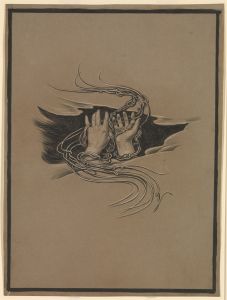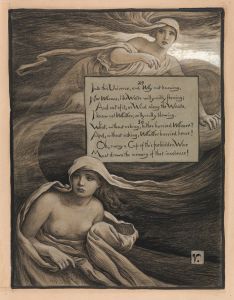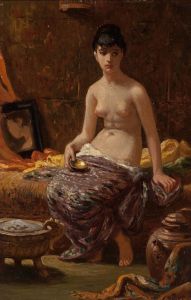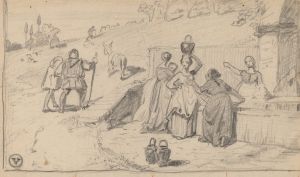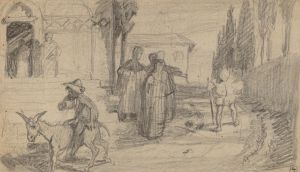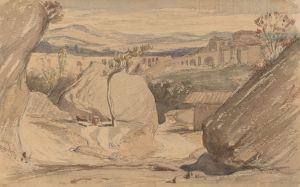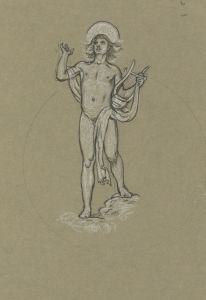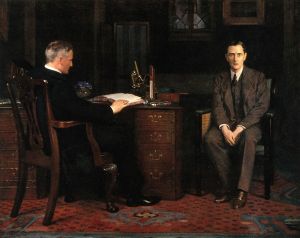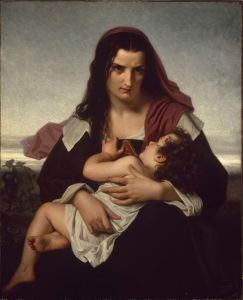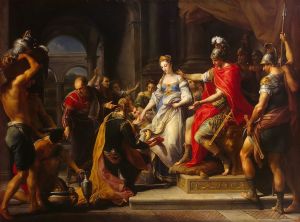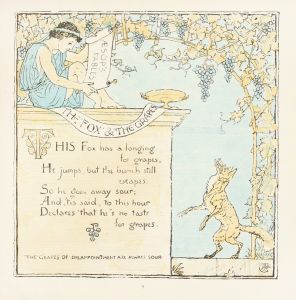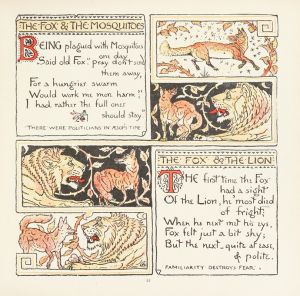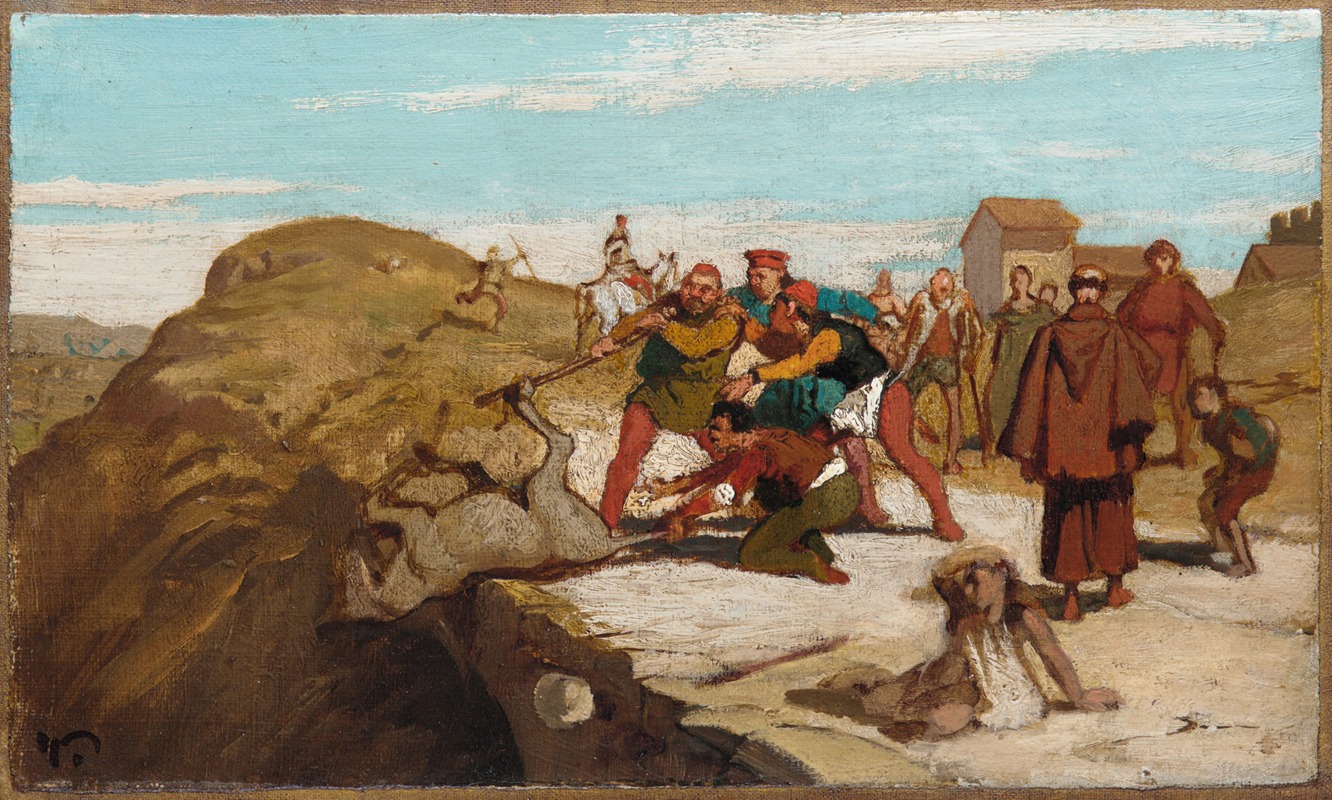
The Fable of the Miller, His Son, and the Donkey No. 7
A hand-painted replica of Elihu Vedder’s masterpiece The Fable of the Miller, His Son, and the Donkey No. 7, meticulously crafted by professional artists to capture the true essence of the original. Each piece is created with museum-quality canvas and rare mineral pigments, carefully painted by experienced artists with delicate brushstrokes and rich, layered colors to perfectly recreate the texture of the original artwork. Unlike machine-printed reproductions, this hand-painted version brings the painting to life, infused with the artist’s emotions and skill in every stroke. Whether for personal collection or home decoration, it instantly elevates the artistic atmosphere of any space.
"The Fable of the Miller, His Son, and the Donkey No. 7" is a painting by the American artist Elihu Vedder, created in the late 19th century. Elihu Vedder (1836-1923) was an American symbolist painter, book illustrator, and poet, known for his mystical and allegorical works. He spent much of his career in Italy, where he was influenced by the Renaissance and classical art.
This painting is part of a series of works by Vedder that illustrate the famous fable "The Miller, His Son, and the Donkey." The fable, which has been attributed to Aesop, tells the story of a miller and his son who, while traveling to market with their donkey, try to please everyone they meet. In doing so, they end up being criticized by everyone and ultimately lose their donkey. The moral of the story is that one cannot please everyone and should instead make decisions based on their own judgment.
Vedder's interpretation of the fable is rich in symbolism and detail. The painting captures a moment from the story, likely depicting the miller and his son in one of their attempts to respond to the criticism they face from passersby. Vedder's style is characterized by his use of muted colors, intricate details, and a dreamlike quality that adds a layer of depth to the narrative.
The composition of the painting is carefully structured to draw the viewer's eye through the scene. Vedder's use of light and shadow enhances the emotional impact of the story, highlighting the expressions and body language of the characters. The donkey, central to the fable, is depicted with a sense of realism and empathy, reflecting the artist's skill in rendering animals.
Elihu Vedder's works often explore themes of human folly, wisdom, and the passage of time, and "The Fable of the Miller, His Son, and the Donkey No. 7" is no exception. The painting serves as a visual representation of the timeless lesson conveyed by the fable, encouraging viewers to reflect on the consequences of trying to conform to the expectations of others.
Vedder's contributions to art extend beyond his paintings; he is also well-known for his illustrations of "The Rubaiyat of Omar Khayyam," a collection of quatrains translated by Edward FitzGerald. His work on this project further cemented his reputation as a master of allegorical and symbolic art.
"The Fable of the Miller, His Son, and the Donkey No. 7" is housed in a private collection, and as such, it is not as widely accessible as some of Vedder's other works. However, it remains an important piece within his oeuvre, exemplifying his ability to convey complex moral lessons through his art.
In summary, Elihu Vedder's "The Fable of the Miller, His Son, and the Donkey No. 7" is a significant work that illustrates a classic fable with depth and nuance. Vedder's skillful use of symbolism, composition, and emotional expression makes this painting a noteworthy example of his artistic legacy.





